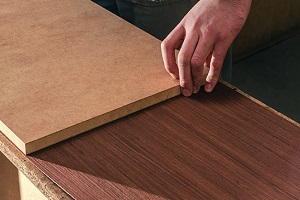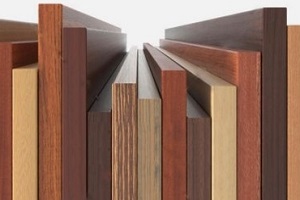 When architects design a building, some of the most common sticking points include how rooms should be laid out, where windows will be placed and numerous aesthetic choices. As building codes increasingly call for inclusion of fire retardant materials in commercial and multi-family housing construction, designers and builders must also correctly identify and choose the fire-resistant materials necessary to meet building code.
When architects design a building, some of the most common sticking points include how rooms should be laid out, where windows will be placed and numerous aesthetic choices. As building codes increasingly call for inclusion of fire retardant materials in commercial and multi-family housing construction, designers and builders must also correctly identify and choose the fire-resistant materials necessary to meet building code.
Fire retardant lumber and plywood are commonly used building materials that contribute to achieving the fire-resistance hourly ratings that building codes require. That is where fire retardant infused wood and fire retardant coated wood come in. Here is what you need to know about the differences between fire retardant-coated and -infused wood and why the fire retardant-infused wood is the better choice.
What Is Fire Retardant Coated Wood?
Fire retardant coated wood is untreated lumber or plywood to which a coating of some type of fire retardant substance or chemical has been applied. Fire needs to burn through the coating before it will reach the raw wood beneath.
The coating is applied by spray or brush either at the wood treater’s facility or in the field by the construction crew or end user. Given its ease of application, coated material can be cheaper than their infused counterparts.
What Is Fire Retardant Infused Wood?
Compared to coated wood, the infused wood process is more complex. When lumber and plywood is infused with fire-retardant chemicals, they go through the same pressure treating process used to infuse wood with pest repellant and rot prevention solutions.
The wood is placed into a large vacuum cylinder that extracts air and moisture out of the lumber. A fire retardant solution is injected into the cylinder and the cylinder is re-pressurized forcing fire retardant chemicals into the cells of the wood that were previously occupied by air and water molecules.
By pressure treating, the chemical penetrates wood by about ½-inch. Thus, plywood and lumber up to 1-inch thick are fully infused with the fire retardant chemical. And while dimensional lumber of 1-½” thickness or greater is not completely infused, the wood remains fire-resistant so long as it is not ripped (it can be cross-cut, however).
Why Infused Wood Is Better
Perhaps the most compelling reason for choosing pressure-infused fire retardant-treated wood (FRTW) is that it is the only type of FRTW that complies with building code requirements. While building codes typically cite the requirement for Class A rated FRTW, and coatings claim to achieve a Class A rating, building codes specifically state that only Class A rated pressure-infused FRTW is permitted for use.
Coatings can chip, delaminate or peel as a result of improper application, handling, and expansion and contraction or wood due to changes in environmental conditions. Any gaps in coating exposes raw wood to fire penetration.
By contrast, once fire-retardant chemicals are infused into wood, they become intrinsic to the material. The protective layer can’t rub or slough off. Should the FRTW be exposed to flame, the treated wood gives off water, carbon dioxide, and forms a char layer that protects the wood from immediate ignition.
 Note that there are unique chemical formulations used for pressure impregnation based on whether the treated lumber or plywood is intended for use in interior or exterior applications. The difference between the two formulations is that the chemical associated with interior applications is water-soluble while the exterior chemical is not.
Note that there are unique chemical formulations used for pressure impregnation based on whether the treated lumber or plywood is intended for use in interior or exterior applications. The difference between the two formulations is that the chemical associated with interior applications is water-soluble while the exterior chemical is not.
For architects, builders and material buyers, it’s important to know where the FRTW will be used and specify the correct material as there is a measurable cost difference between interior-use FRTW and exterior-use FRTW.
Get Fire Retardant Treated Wood from a Knowledgeable, Experienced Wholesaler
For almost 50 years, Curtis Lumber & Plywood has specialized in fire-retardant lumber and plywood for both indoor and outdoor applications. Curtis Lumber is an independently owned and operated wholesale lumber dealer exclusively serving premier lumber retailers throughout the mid-Atlantic and Southeast regions of the United States.
To learn more about fire retardant treated lumber and plywood, contact us.

